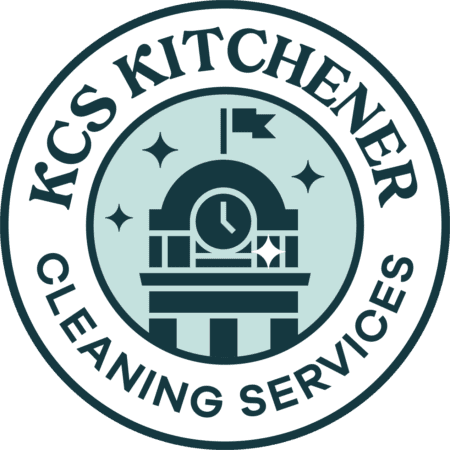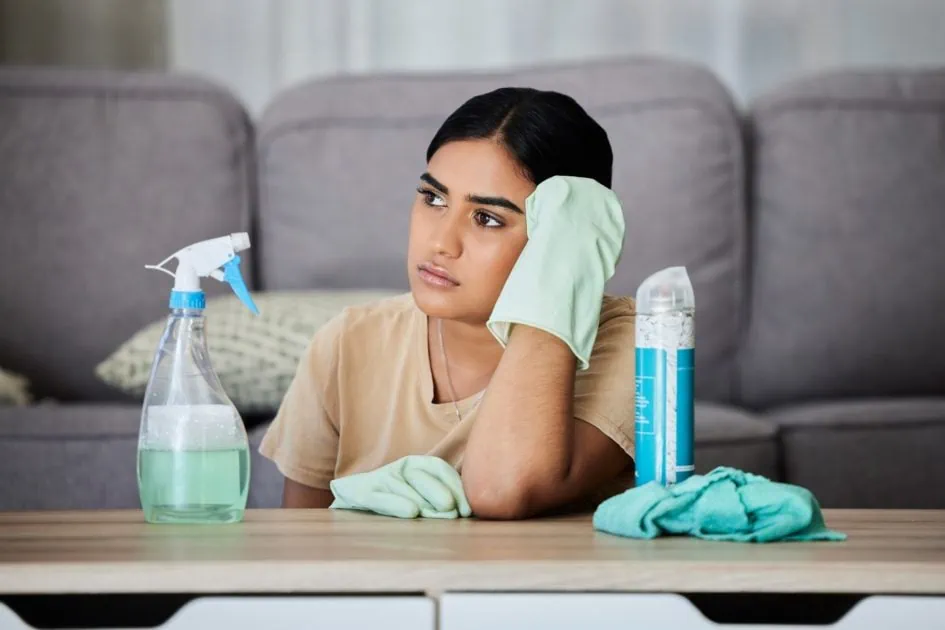Cleaning can at times feel like an overwhelming chore, but following a few simple guidelines can make it much more manageable. Cleaning mistakes are common in households, with certain areas often overlooked during regular cleaning routines. This article will discuss some of the most common cleaning mistakes to help you maintain a spotless home.
Cleaning Basics
Cleaning is one of the most important and time-consuming activities in our everyday lives. But it doesn’t have to be overwhelming. With a few simple steps, it can be easy and enjoyable. In this article, we’ll discuss common cleaning mistakes to avoid, beginning with the basics. We will cover types of cleaners, cleaning tools, cleaning techniques, and the importance of safety when cleaning. We’ll also explore the effects of over-cleaning. With the right knowledge and tools, we can make sure our cleaning practices are effective and efficient.
Types of Cleaners
Cleaning is key in maintaining a healthy home, but there are just as many wrong techniques as recommended ones. First, it is important to understand the difference between the various types of cleaners you may use. Heavy-duty cleaning agents like chlorine-based bleach and ammonia are the sturdiest of cleaners, while slightly milder cleaners include alcohol, vinegar, and soap-based cleaners. When it comes to wood floors and delicate surfaces, gentle microfiber cloths, vinegar-based cleaning solutions, and castile soap are usually the most commonly recommended. With a specialized solution for every type of surface, it is easy to see why the wrong cleaner can do more harm than good. For instance, using a harsh cleaner on oak countertops can strip the surface of its natural oils and damage the material, while using a mild cleaner on bathroom tiles can result in a lack of cleanliness. Therefore, it is important to be mindful of the type of cleaner you are using and always test it on a small, unnoticeable area.
Cleaning Tools
Having the right cleaning tools can make all the difference when it comes to efficiency and effectiveness. Opting for high-quality tools can save you time and money in the long run and help you achieve that spotless, shining look you desire. Vacuums are an invaluable asset when it comes to cleaning; they can help you quickly and easily get rid of dirt and debris without much effort. Mops are ideal for quickly soaking up water and leaving hard-to-reach places spotless. Towels, cloths, and sponges provide extra scrubbing and nook-and-cranny cleaning capabilities. Brushes are also good for getting rid of tough messes, particularly those that cannot be effectively mopped or wiped. The right kind of cleaning solutions can also help break down dirt and grime, making the job easier. When shopping for cleaning supplies, be sure to consider the specific surfaces you will be cleaning and then select the most appropriate tools for that surface.
Cleaning Techniques
When it comes to cleaning, having a few basic techniques up your sleeve can help you tackle nearly any surface and remove any type of stain. Those who have some general knowledge in cleaning have the advantage of being able to deep clean surfaces quickly, while less experienced cleaners could end up making more messes and becoming overwhelmed. Necessary techniques such as dusting and wiping down surfaces, vacuuming, mopping, and scrubbing can be used to clean all types of surfaces. Dedicating time to understand the different types of cleaning supplies, their functions, and cleaning techniques can drastically reduce the time it takes to clean and maintain a sparkling clean home. It is important to know the differences between pH levels of cleaning solutions and when it may be best to use a specialized product as to not damage certain surfaces.
Common Mistakes
Cleaning is a necessary chore but it can also become a source of frustration or even health risks if done incorrectly. Common mistakes are made when cleaning, from over-cleaning to not cleaning enough or using the wrong products. In this article, we will discuss the most common cleaning mistakes to avoid for optimal cleanliness and safety. We will cover over-cleaning, not cleaning enough, not cleaning correctly, not having the right products and not using protective gear.
Over-Cleaning
The act of over-cleaning is one of the most common mistakes people make when it comes to cleaning. Over-cleaning is the excessive and sometimes unnecessary repetition of cleaning procedures, which can lead to the waste of both time and cleaning materials. While it is generally accepted that hygiene is important, over-cleaning can lead to an increased risk of exposure to harmful chemicals, such as bleach and ammonia. Additionally, too much scouring and scrubbing can cause damage to surfaces, resulting in a less effective results. In many cases, light dusting and spot cleaning are sufficient. For example, it is usually unneccesary to use harsh scrub brushes on a countertop that only has a light layer of dust. It is important to choose the appropriate cleaning agents for the surface and exercise efficient cleaning practices.
Not Cleaning Enough
A common mistake when it comes to cleaning is not doing enough. Skimping on cleaning can lead to worse messes later on and is a frequent cause of frustration for homeowners and cleaning professionals alike. Not cleaning enough means that dirt and dust pile up and bacteria accumulates over time, and it may not be obvious at first. Areas like fans, blinds, and baseboards can also easily be overlooked as this tends to be out of sight and therefore out of mind. The first step to avoiding this mistake is to take the time to truly evaluate which areas need attention on a regular basis. Beyond that, it is important to thoroughly clean each area in question and ensure that there are no missed spots.
Not Cleaning Properly
Cleanliness is paramount when it comes to maintaining a healthy and hygienic living environment. Unfortunately, however, not cleaning properly is one of the most common mistakes made. It is important to determine the correct Cleaning Method for each surface including hardwood, laminate and tile. Using incorrect products can damage the surfaces irreversibly and render them virtually impossible to clean. For instance, wrong cleaning agents or the wrong mop for a specific material can easily damage the surface, or leave dirt and grime behind. To avoid this, one should carefully read the instructions of the cleaning products and make sure the items used in the cleaning process are appropriate for the task. Furthermore, using too much water or too harsh a brush could lead to damage. It is also imperative to check the list of cleaning products used, if they are eco-friendly, and if they could be a potential hazard to humans or pets in the vicinity.
Preventative Measures
Cleaning is a necessary part of life, but many people make common mistakes when cleaning which can lead to significant problems. In this article, we will explore the most common cleaning mistakes to avoid and the preventative measures that can be taken to ensure a safe and effective cleaning. Specifically, we will discuss the importance of cleaning regularly, cleaning thoroughly, and taking caution when handling cleaning chemicals.
Cleaning Regularly
Regular cleaning is one of the best preventative measures to avoid common cleaning mistakes. It helps eliminate the buildup of dirt, dust and other debris that can accumulate quickly, making routine maintenance much more difficult. Fully understanding the importance of regular cleaning is critical to ensure your surfaces and items remain in peak condition, avoiding the need for deep cleanings. To start, create a detailed cleaning checklist and schedule, based on the materials and surfaces you’ll need to clean. Consider the treatments for both natural and synthetic surfaces, and adjust as needed for interior and exterior spaces. Pay special attention to any high-traffic areas that can quickly become breeding grounds for dirt and germs. Make sure to update your checklist and schedule as needed to accommodate any changes in your environment. Lastly, be sure to stock up on the necessary cleaning supplies and tools, including sponges, mops, brooms, buckets, cloths, and other essential items.
Cleaning Thoroughly
Taking preventative steps to avoid common cleaning mistakes begins with thorough cleaning. This cleaning should not be a surface clean, but should focus on the proper care of surfaces, fabrics and furniture, floors and wall surfaces. To ensure that these areas remain clean and free of dirt and dust, it is essential to vacuum every room in the house on a regular basis. Vacuuming removes dirt, dust and other debris that can settle deep into the fabric and carpet fibers. It is also important to mop floors to remove visible dirt and allergens. Regular dusting of surfaces will help keep the home environment free of allergens and dirt. For furniture and other upholstered items, a thorough vacuuming and spot cleaning helps protect the fabric from dirt and staining. Additionally, cleaning with the appropriate cleaners for the specific fabric and stain is key for proper cleaning results.
Cleaning Safely
The key to any successful cleaning effort is to do it safely. By taking the proper preventative measures, cleaning can be done more effectively and with little chance of injury. First and foremost, it’s important to wear the right protective gear such as rubber gloves, face masks, and eye protection when handling all cleaning solutions. Make sure the area is well-ventilated and all electrical cords and outlets are covered. Additionally, read the label of all cleaning products and follow any directions or warnings carefully. There should be no mixing of chemicals without consulting the directions first. Lastly, always clean from top to bottom to avoid spreading any dirt and debris. Investing a bit of extra time into proper safety protocols will ensure a safe, effective, and efficient cleaning experience.
Frequently Asked Questions
What should I watch out for while using harsh chemical cleaners?
It is important to ensure that protective gloves, ventilation and eye protection are used when using harsh chemical cleaners as prolonged contact can damage skin, eyes and respiratory systems. Users should also take care to ensure that the chemicals do not come into contact with other surfaces or objects that may be sensitive to their effects.
What is the proper way to clean delicate fabrics and surfaces?
Delicate fabrics and surfaces should typically be cleaned by either spot treating them with cleaner or wiping them down with a damp, soft cloth. When working with materials like leather, suede or delicate fabrics, it is best to use a special cleaner designed for such materials, as regular cleaners can easily damage them.
What is the best way to avoid mold and mildew growth in the home?
Mold and mildew growth can quickly become a problem in any home, so it is important to take preventive measures to avoid it. Keeping the house well-ventilated, using dehumidifiers, tray liners, and mildew-resistant paint and sealants, and regularly cleaning and disinfecting high-moisture areas are all great strategies to avoid mold and mildew growth.
When should window frames be washed?
Window frames should be washed at least once every month or two with a mild detergent and water solution. For heavily soiled window frames, a stronger window cleaning solution may be necessary, but it is important to ensure that the frame is rinsed thoroughly afterwards to remove any residue.
What is the best way to avoid scratching surfaces when vacuuming and scrubbing?
When vacuuming and scrubbing surfaces, it is important to use the appropriate tools for the specific material being cleaned. Vacuums should be set to a low suction setting and appropriate brushes should be used to clean surfaces that can easily be scratched in order to safely loosen dirt and debris.
What can I use to clean up sticky spills?
Sticky spills can be cleaned using either a damp cloth or paper towels. If the spill is particularly large or sticky, it is best to first wet the area around it and then blot the spill with a cloth before scrubbing it gently with a mild detergent solution.


